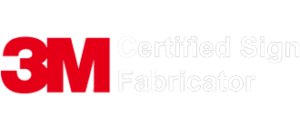Bidding season is well underway, and things will start to heat up over the next few months as the prices of both imported and domestic steel continue to rise.
As of December 9th, 2020, Fastmarkets reported that prices for both cold and hot-rolled steel coil in the U.S. rose to their highest levels in over two years.
Estimators, buyers, and bidders will need to be cognizant of the upcoming price hikes and adjust their strategies accordingly.
Read on to learn more about why this is happening and the various strategies you can employ to protect both yourself and your bids from escalating steel prices throughout 2021.
What’s Causing the Rising Prices?
We have seen tremendous fluctuations in the prices of steel. There are several combined factors that we can attribute to the rising costs:
- World economic growth
- Mill increases
- Rising substrate costs
- Shrinking coil supply
Notably, the coronavirus pandemic has exacerbated this situation significantly. The economies of many countries were essentially shut down throughout most of Q2 and Q3 of 2020. Now that they’re slowly starting to recover, we’re seeing an increased demand which started in Q4 2020.
What Steel Products are Affected?
All products that contain steel are subject to price hikes. When the increases are small, suppliers often absorb them. However, with larger and more sustained increases, the costs are passed down through all supply chain levels.
Some of the biggest products that will most likely see price increases are sign posts, bases, frames, and structures. There will also most likely be an impact on guardrails, attenuators, and other steel-based products.
What’s in Store for 2021?
Since August of 2020, prices are up 30% or more—and there is speculation that further increases are on the horizon for Q1 of 2021. This is rapidly becoming a worldwide issue as “import volumes are extremely limited,” as a West Coast distributor recently remarked. “With tariffs and dumping suits, you aren’t seeing a lot of imports arrive. I think domestic producers like the present status quo.”
Strategies to Mitigate the Risk
The good news is that there are several strategies that buyers and bidders can utilize to help mitigate as much risk as possible.
Procure Early—Consider procuring products as soon as you receive a contract. The cost of warehousing materials is often much less expensive than having to pay an increased rate.
You should also avoid last-minute planning and buying, which can result in the highest possible prices. Another option is to exercise the contractual ability to bill for and receive stockpile payments.
Vendor Relationships—Work closely with your vendors for usage projections and to reserve material.
Consolidate Purchases—Try to consolidate your purchases at the highest possible level. HydroReview recently suggested that you should regularly review your metal requirement forecasts and then work closely with vendors to procure the best possible price.
For example, if you’re forecasting a need for 50,000 tons of material throughout 2021, you can offer a guarantee to take 25,000 tons in Q1—and then request a fixed price. It’s often challenging to negotiate unless you have a long-term relationship or enough volume to make it worth their while.
Need More Advice?
The best way to protect yourself against the upcoming rise in steel prices is to employ one or more of the above strategies. At Interwest Safety Supply, we can help guide you through these next four quarters and help prevent margin erosion.






